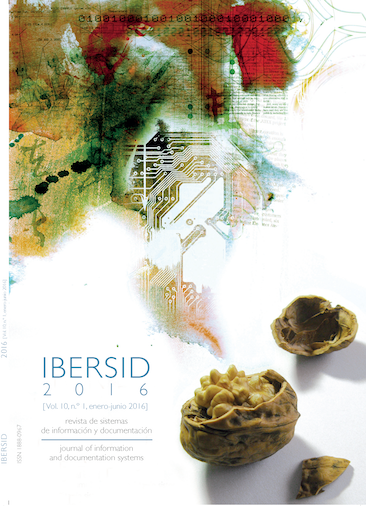Modelo Records Continuum – RC aplicado aos documentos de uma instituição pública universitária
DOI:
https://doi.org/10.54886/ibersid.v10i1.4230Palavras-chave:
Records continuum, Arquivologia, documento digitalResumo
Es en este modelo de gestión de documentos de trabajo, el modelo Records Continuum - RC - como los estudios de Frank Upward y sus colegas de investigación sobre este modelo en el contexto australiano. Tiene como objetivo el estudio y la aplicabilidad del modelo de RC para el Sistema de Información para la Educación - SIE, en el Módulo de Registro de Proyectos, de la Universidad Federal de Santa Maria - UFSM, situado en el casco-de Santa María, en el estado de Río Grande do Sul, a través de su base de datos, creada en 1992, llamado Sistema de Información para la Educación - SIE. Trabajamos con las cuatro dimensiones consideradas en el diagrama de RC, estos aplican a SEI/UFSM, teniendo en cuenta también la pertinencia de la Ley de Acceso a la Información. Cabe destacar que el enfoque del tema es cualitativa y es parte de nuestro trabajo final de doctorado.
Downloads
Downloads
Arquivos adicionais
- Figura 1. Diagrama dos Records Continuum
- Figura 2. Tela inicial de registro de projetos
- Figura 3. Criação do documento e as inter-relações
- Figura 4. Relações entre subsistemas
- Figura 5. Dimensão da Organização na perspectiva do SIE
- Figura 6. Dimensão Social na perspectiva do SIE
- Dados para contato
- Mini-currículo Telma C. C. Madio
- Mini-currículo Gilberto F R Viana
- Carta de compromiso
Publicado
Como Citar
Edição
Seção
Licença
Copyright (c) 2015 Authors retain their copyright, but transfer the exploitation rights (reproduction, distribution, public communication and transformation) to the journal in a non-exclusive way and guarantee the right to the first publication of their work to the journal, which will be simultaneously subjected to the license CC BY-NC-ND. Authors take whole personal responsibility on fulfilling all the appropiate ethical codes and laws, and obtaining all the necessary copyright permissions regarding their articles. Institutional and self- archiving is allowed and encouraged.

Este trabalho está licenciado sob uma licença Creative Commons Attribution-NonCommercial-NoDerivatives 4.0 International License.
© 2007- . Los autores y autoras conservan sus derechos de autor, aunque ceden a la revista de forma no exclusiva los derechos de explotación (reproducción, distribución, comunicación pública y transformación) y garantizan a esta el derecho de primera publicación de su trabajo, el cual estará simultáneamente sujeto a la licencia CC BY-NC-ND. Los autores aceptan la responsabilidad legal de cumplir plenamente con los códigos éticos y leyes apropiadas, y de obtener todos los permisos de derecho de autor debidos. Se permite y se anima a los autores y autoras a difundir electrónicamente la versión editorial (versión publicada por la editorial) en la página web personal del autor y en el repositorio de la institución a la que pertenece.




